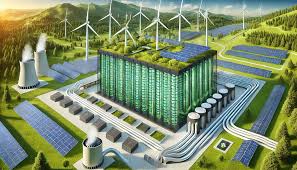Why It Is Necessary to View a Green Card Even After Searching a Title Deed of a Property in Kenya Today
Why It Is Necessary to View a Green Card Even After Searching a Title Deed of a Property in Kenya Today
Why Land Verification Still Matters in Kenya
Buying land in Kenya is one of the most important investments anyone can make. However, with the rising number of land fraud cases and duplicate title deeds, it has become increasingly vital to go beyond the basic online title search at the Ministry of Lands.
Many property buyers assume that once a title deed search confirms the registered owner, the process is complete. Unfortunately, this is not always the case. The green card, often overlooked, remains the most critical document in verifying land ownership authenticity in Kenya today.
What Is a Green Card in Kenya?
A green card is the original record kept at the Lands Registry that captures the entire ownership history and official transactions of a parcel of land from the day it was registered.

This card includes:
- The first registered owner’s name
- All transfers, charges, cautions, and leases recorded over time
- Any court orders or restrictions placed on the property
- The official reference number and land parcel details
Essentially, the green card acts as the mother document for the title deed — the title you hold is simply a copy reflecting information derived from it.
The Difference Between a Title Deed Search and a Green Card
| Feature | Title Deed Search | Green Card |
| Source | Online or manual request at Lands Registry | Physical document held at Lands Registry |
| Purpose | Shows current registered owner | Shows ownership history and all transactions |
| Scope | Snapshot of current details | Complete ownership chronology |
| Accessibility | Easy to obtain | Requires registry permission or advocate access |
| Reliability | Can be falsified or duplicated | Official and primary record |
A title deed search only tells you who currently owns the land and if there are any charges or encumbrances. However, a green card reveals how ownership changed hands, ensuring the current title is legitimate.
Why Viewing a Green Card Is Now More Important Than Ever
In recent years, Kenya has witnessed several cases where fraudsters have used forged title deeds or manipulated land records. Some of these cases involved:
- Duplicate or parallel titles registered for the same parcel
- Unauthorized transfers done using fake documents
- Fake title deeds printed using stolen templates
- Encumbrances or cautions hidden from public searches

Even after conducting an online search through ArdhiSasa, it is still possible that discrepancies exist in the digital records. Viewing the physical green card at the Ministry of Lands Registry provides the final assurance of authenticity.
How to Access a Green Card in Kenya
- Visit the Ministry of Lands Registry in the county where the property is located.
- Apply through your lawyer or advocate, who will write a formal request.
- Provide ownership documents, including a copy of the title deed and ID.
- The land registrar may allow inspection of the green card or provide a certified extract.
This process may take more time than an online search, but it guarantees the most credible verification of the property’s status.
Why Smart Investors Always Check the Green Card
For anyone buying, leasing, or investing in land in Kenya, due diligence must go beyond the surface. Checking the green card helps you:
- Confirm true ownership history — Ensure every transfer was legally conducted.
- Detect fraudulent titles — Identify parallel registrations or forged transfers.
- Reveal hidden encumbrances — Some charges or court orders might not appear in an online search.
- Verify authenticity of the title deed — Ensure it aligns with the original registry record.
- Build confidence for transactions — A transparent land history protects you from legal disputes.

Green Card and ArdhiSasa: What You Should Know
While the ArdhiSasa digital platform has made land searches easier, it is still in the process of digitizing all historical land records. Not every property has been updated into the system, especially those registered before digitization began.
This means that:
- Some green card data might not be reflected online yet.
- If the digital search contradicts the physical records, the green card prevails.
Therefore, even in this digital era, the green card remains the final authority in confirming land ownership in Kenya.
Combine Both Title Search and Green Card Verification
To protect your investment:
- Start with an official online title search on ArdhiSasa or at the county lands registry.
- Follow up with a green card inspection at the registry to verify historical accuracy.
- Engage a licensed land surveyor and lawyer to interpret any discrepancies.
Doing both ensures you never fall prey to fraudulent property dealings.
The Green Card Is Your Final Line of Defense
In Kenya’s real estate landscape, a title deed search alone is not enough. Viewing the green card remains a crucial step in ensuring you are buying or investing in genuine, dispute-free land.
Before committing your hard-earned money, take that extra step — view the green card at the Ministry of Lands. It might just save you from losing millions to land fraud.























